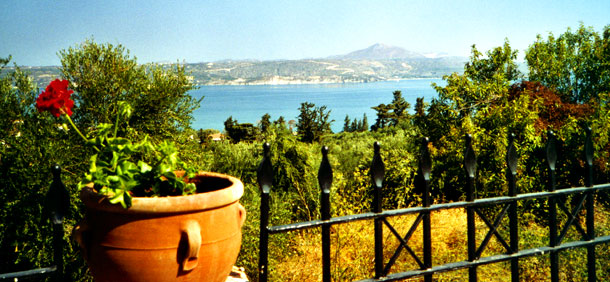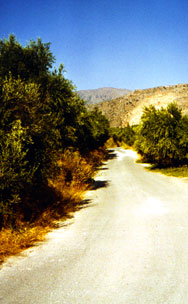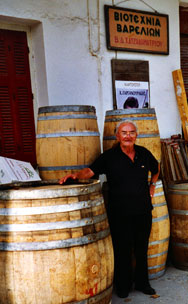- Villa search

- Canaries
- Caribbean
- Croatia, Bulgaria and Hungary
- Cyprus
- Florida
- France and Corsica
- Greece
- Italy
- Lakes and Mountains
- Madeira
- Malta and Gozo
- Portugal
- South Africa
- Spain - Balearics

Information
Knossos can wait
David Kernek owns up after a lazy week in Crete. He’s a beach bum, not a culture vulture

Through an olive grove
I never made it to the great Palace of Knossos on our first holiday in Crete a few years ago. I felt a smidgeon of shame about this failure, because there’s more to Greece than timeless days on sizzling beaches, long Boutari-fuelled lunches and dinners in quayside tavernas, and some of the most hospitable people on the planet. There’s all that history, and I really should be seeing more of it, adding it to the list of ticked boxes – the Parthenon, Epidaurus, Delphi, Sparta…
My first excuse was that we were staying at the other end of the island, in the hills a few miles south-west of Chania. The second was that we were there for only a week, and did we really want to waste half a day driving – probably more, because I’d almost certainly get lost? And it was hot. And our villa up in those hills had a pool. And the beaches just a short drive away were irresistible. And there was so much to see in Chania, formerly Crete’s capital but still its prettiest town by far. And Knossos would be there next time, wouldn’t it?
The next time came in mid-September, when we were going back to Crete and when I’d resolved, as firmly as I can resolve anything, we would see Knossos.
But…

Barrel-maker and Royal Navy veteran, Demitrios Hagidemetrios
For this holiday, we were staying in the hills just above the village of Kalives, a few miles east of Chania and on the outer southern shore of Souda Bay, one of the Med’s best deep water anchorages. Crammed into the harbour’s neck and spreading out into the Akrotiri peninsula, are docks, a NATO base, a Greek navy yard, a military airfield, a missile-testing site and, by the roadsides on the drive from Chania airport around the bay to Kalives, massive ‘no photography’ warning signs in Greek and English. Ignore them at your peril. There are also Commonwealth and German war cemeteries; this part of Crete saw some of the region’s bloodiest WWII battles.
There’s a light traffic of tankers and gunboats heading home to port or out to sea, but nothing of the bay’s business end – reminders that Crete is much more than a manicured playground there only for the enjoyment of lotus eaters down from northern Europe for the hot sun and the warm sea – is visible from our two-storey house on the hill. From our two sun terraces, we can see across the gaping mouth of the bay to the Akrotiri headland sliding into the shimmering sea. The White Mountains shine in the south. Much closer, there’s the stark ledge of rock that is Aptera, on top of which are Greco-Roman ruins and a forbidding Turkish fort; and all around us there’s a forest of olive and citrus trees. At night, the lights from a handful 0f hidden houses scattered down the hill twinkle above the groves.
home | destinations and editorial | villa search | property for sale | car hire | flights | services
villaseek blog | contact villaseek | links and resources | advertise your villa© Dune Root Ltd and Villaseek.com 2012 - Caribbean
- Canaries